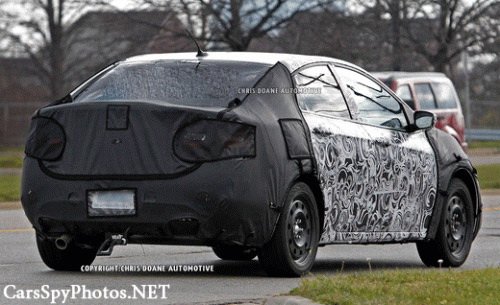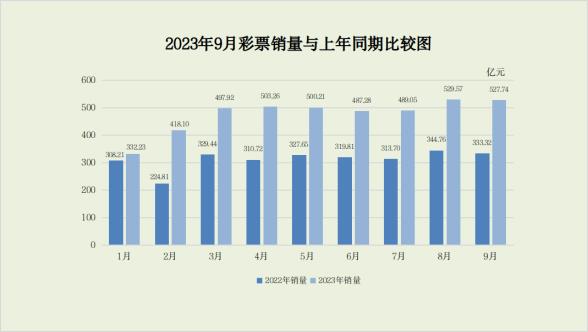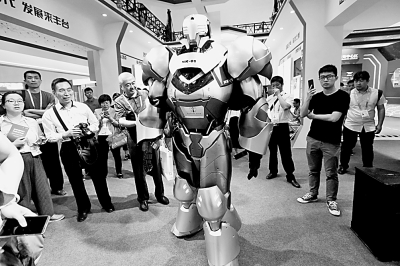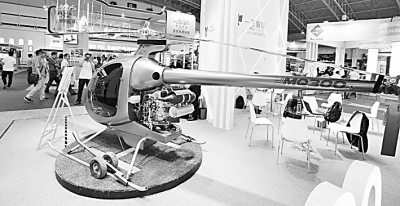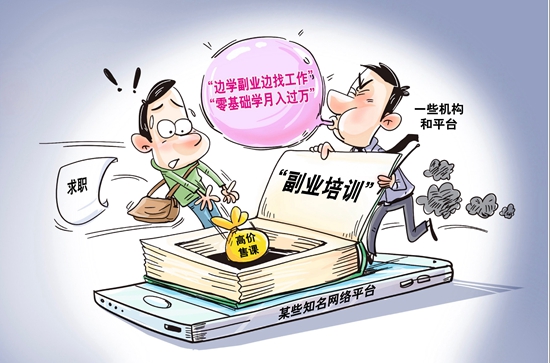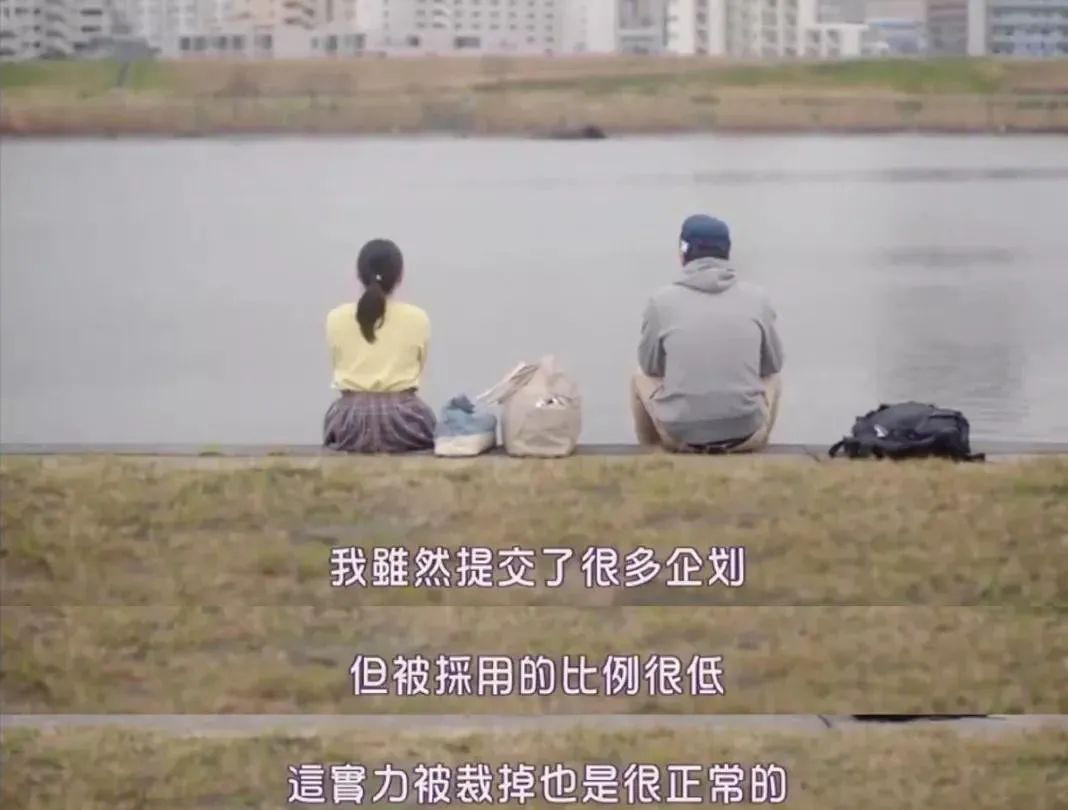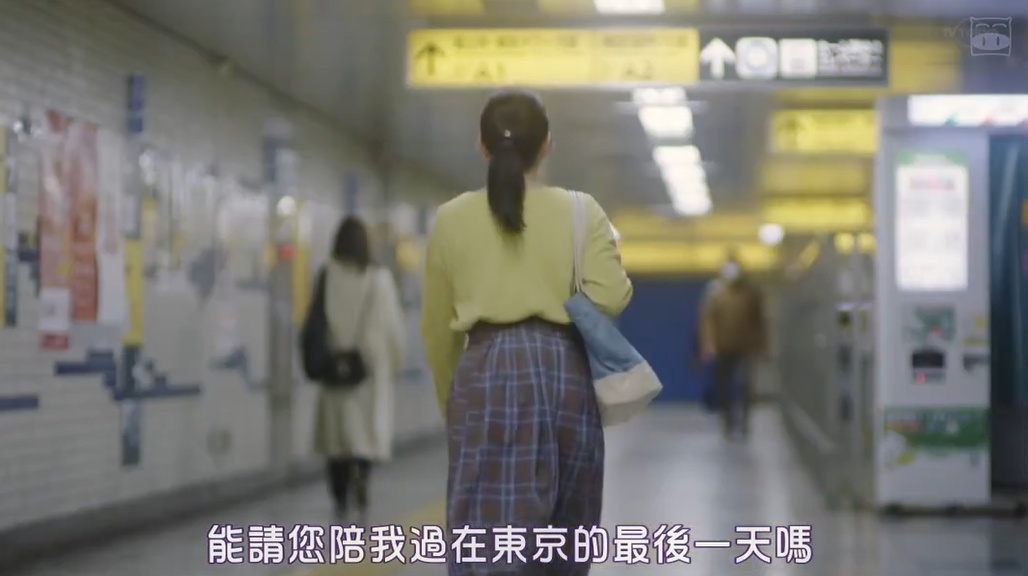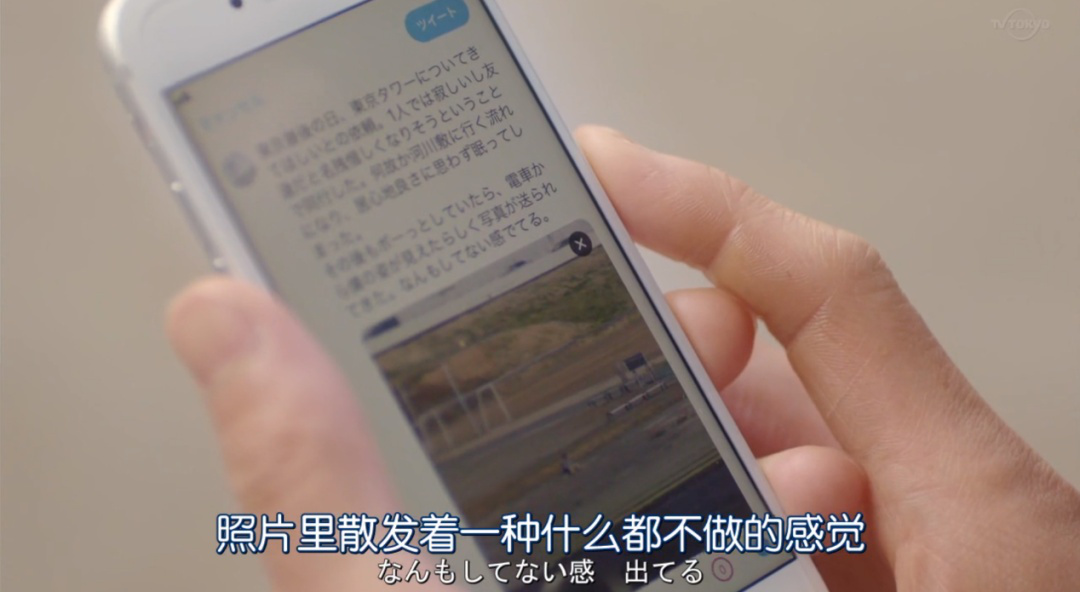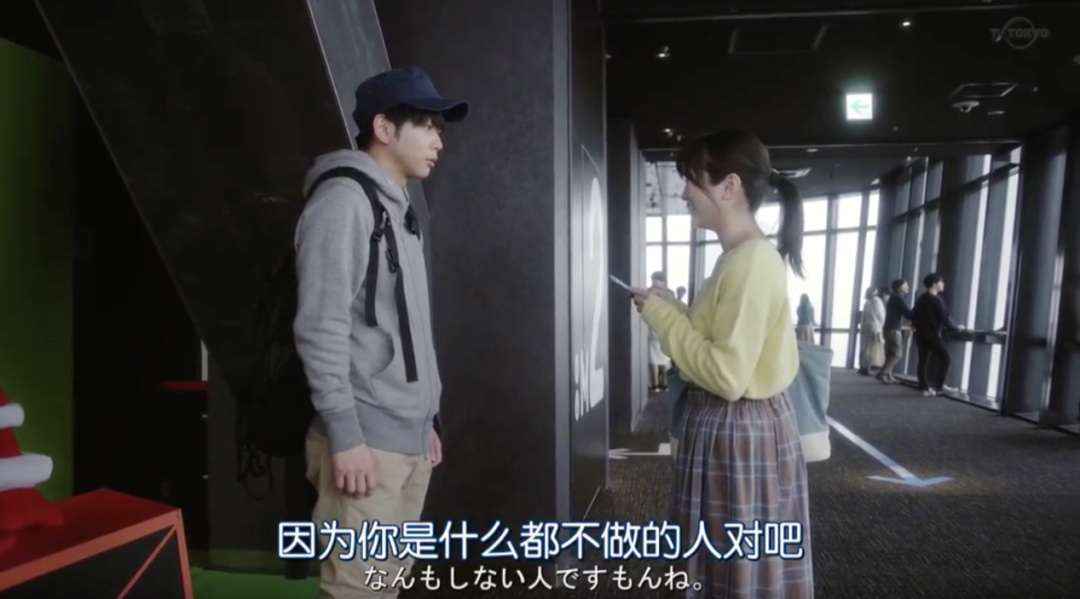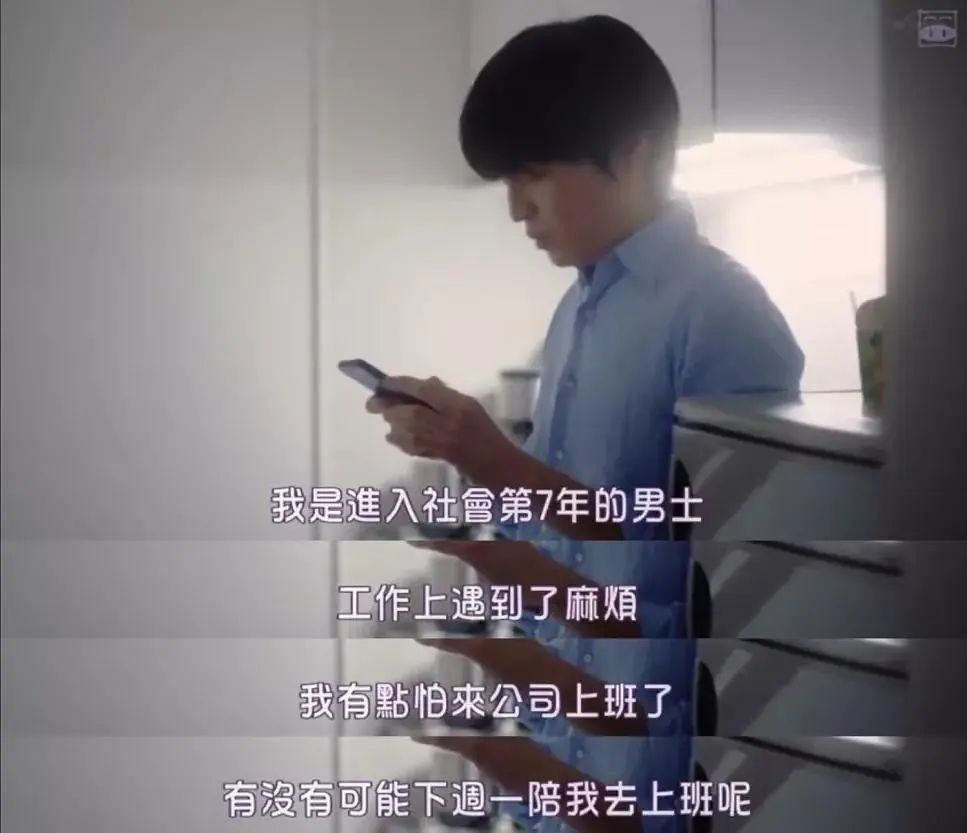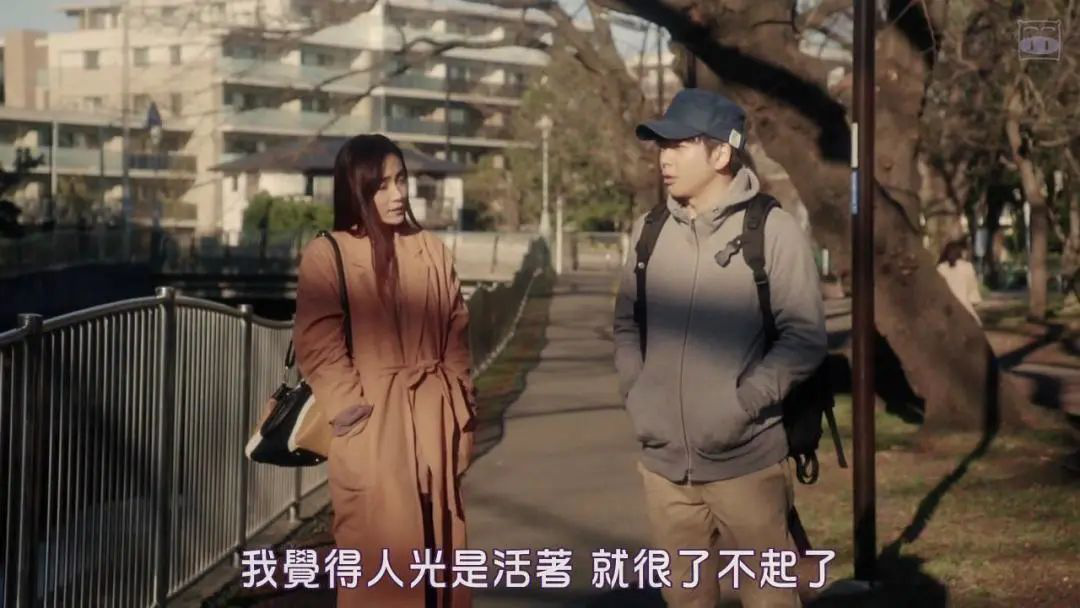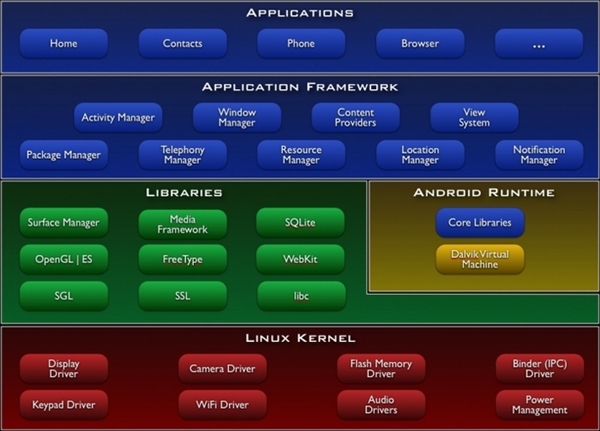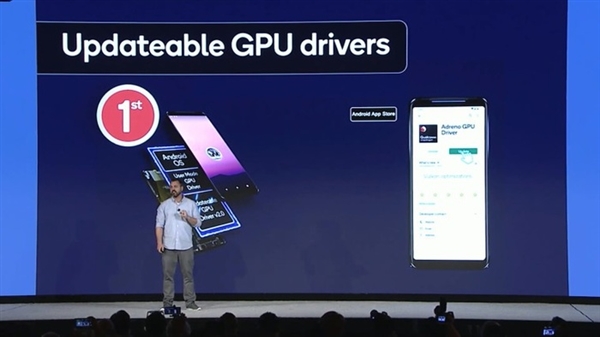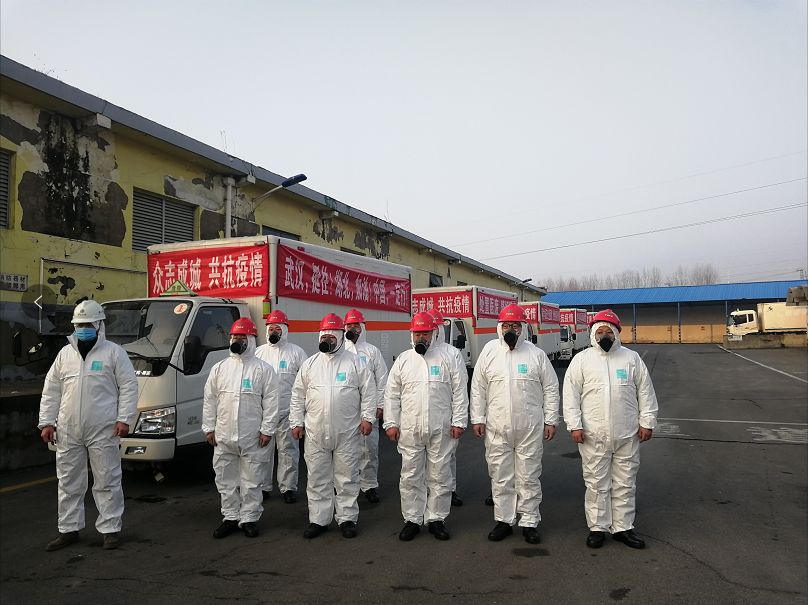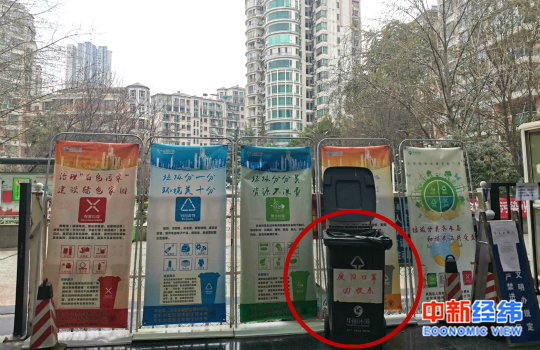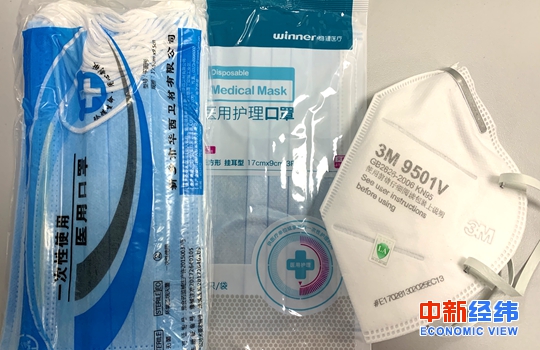Original cha Shao Wang Shi cha Shao
In 1989, Ni Kuang, James J.S.Wong and Cai Lan made a program. The reason was that Ni Kuang fell in love with a mommy, and often went to James J.S.Wong and Cai Lan for drinks. Cai Lan was unwilling and felt that she was spending money to entertain them. So James J.S.Wong suggested that the three of us should make a program, see beautiful women and make money.
Together, the three men sold their ideas to TV stations, and "Unprotected Tonight" came into being.
There are three salty and wet guys sitting on a sofa, and the topic is all is forgiven. Invited guests, including Leslie Cheung, Joey Wong, Brigitte Lin, Maggie Cheung, Rosamund Kwan … all of them were top-notch in the 1980s.
Unfortunately, the program ended in a hurry after a year. In 1992, Ni Kuang went to live in the United States, leaving only one sentence: "I have made up my mind to fade out. Since then, the ends of the earth have been wandering; Drunk and dry, the sun and the moon in the pot; Sitting in the bamboo, reading in the flowers; There is no me in the world, and the troubles are caused by him; Knowing the old and the new, if you actually think about it occasionally, it can be regarded as an early bliss. "
Today, Hong Kong’s golden age has long since withered, and those three men, James J.S.Wong, passed away early. Today, Hong Kong writer Sai Shing Sun also posted on social media: "Brother Ni left this afternoon." Cai Lan was left alone and occasionally appeared in public.
Looking back, "No Defense Tonight" may be the best time of their lives. After all, the golden age of Hong Kong entertainment industry left us without saying goodbye.

In Hong Kong in the 1980s, popular culture flourished.
At that time, there were four talented people who were active in the cultural field: Jin Yong, who wrote martial arts, Ni Kuang, who wrote science fiction, James J.S.Wong, who wrote lyrics, and Cai Lan, who wrote "Flowers, Birds, Insects, Fish and Gourmets". They are called "the four great talents of Hong Kong" in Jianghu.
The four people have an excellent private relationship and often go out for dinner, and Jin Yong pays the bill every time. Cai Lan was sorry. He once stood up and wanted to check out after eating. Unexpectedly, Ni Kuang took him and said with a smile, "Who gives more money? Do you have more money?" Cai Lan paused and burst out laughing.
Whenever someone mentions the name "Hong Kong’s Four Great Talents" to Cai Lan, he always retorts, saying, "Jin Yong shouldn’t be with the three of us who are’ naughty’. He is a great master, and I respect him very much. Except that he has a little talent, none of us are. We just try our best to turn words into songs to maintain our luxurious life. "
Jin Yong doesn’t like to talk, and the other three have the same hobbies. They smoke and drink to provoke beautiful women, and the name of lewdness resounds among the streets.
James J.S.Wong published a book called "No Anthology", which contains his own dirty jokes and textual research on swearing, and its popularity in Hong Kong is second only to Jin Yong’s martial arts novels. Hacken Lee once said that his sexual enlightenment came from this collection of essays. Ni Kuang is even worse. A whole wall at home has collected thousands of erotic videos, and Cai Lan has produced many romantic films.
Ni Kuang is the best drinker among the three. For a while, he often asked James J.S.Wong and Cai Lan to go to a nightclub to drink, saying that they were drinking, but in fact they took a fancy to the mommy there. Every time three people sit down, they will always call a bunch of women to accompany them, and make them tremble with laughter.
However, the women in nightclubs are generally ugly and the wine is poor. Cai Lan is unwilling: "The three of us have been talking, and those women have been laughing. This is not that we are entertaining them."
After hearing this, James J.S.Wong suggested, "Why don’t the three of us do a program together, where we can drink, see beautiful women and make money?" As soon as the three men got together, they sold the idea to the TV station. In 1989, "Unprotected Tonight" came into being and was broadcast on time every Friday night.
From the host to the recording environment, "indecent" is revealed everywhere.
There are three salty and wet guys sitting on a sofa, with cigarettes in their left hand and red wine in their right hand. They are always drunk, so they are tired and collapse on the sofa, even lying on the ground. Among them are the guests of the current program, all of whom are top-notch in the 1980s-Leslie Cheung, Joey Wong, Brigitte Lin, Maggie Cheung, Rosamund Kwan … There are all kinds of drinks at each table.

In the subsequent interview, Cai Lan recalled, "Every time the guests come, we will open the wine and tell them first that this is a video program. If you don’t like it, we will cut it."
After listening to this, the guests relaxed, picked up their glasses and finished the recording. The material of one hour before recording is generally unusable, and each other has not yet entered the state. An hour later, the alcohol took effect and everyone was slightly tipsy. The host dared to ask and the guests dared to answer.
The Cantonese of the three people is not authentic, but they can speak it. After the interview, they drank stagger.
Chatting for a whole game, when the camera is turned off, the host asks the guests, "Do you want to show it to you?" Everyone is still in the mood, always waving and saying, "Hey, what are you watching? I don’t want to watch it." Keep drinking and having fun.
No one checks, then broadcast it all. Sex desire, gossip privacy, all is forgiven. The program once created 70% of the ratings.
Joey Wong said: "I seldom confess so much, but I can easily say what I want to say on your program." Brigitte Lin said: "The interview here is the most natural one I have done in my life."
Leslie Cheung also said: "Since it is" Unprotected Tonight ",you can say anything."

On the show that year, Joey Wong had just turned 21 years old, and was unexpectedly voted out of the "Top Ten Pretty Girls" of that year. Before she went on stage, James J.S.Wong said, "We have to avenge you. There is no reason why you don’t have a share."
Joey Wong is beautiful. Cai Lan said, "Her eyes can kill people".
In 1987, after the success of Ghost Story, James J.S.Wong publicly expressed her appreciation for Joey Wong and joked that she was her number one sexual fantasy. However, Joey Wong is in love with Taiwan Province singer Chyi Chin.
In 1985, Chyi Chin became popular with the album Wolf. The agency decided to support him and bought a movie called "Beautiful Grass and Beautiful Sky", making him the male host and choosing his own female host.
Chyi Chin picked and picked things that didn’t look good until she saw Joey Wong’s poster and couldn’t move her eyes. She immediately said to the company, "I want her."
After the finalization, 19-year-old Joey Wong flew from Taiwan Province to Hongkong, and Chyi Chin held a flower pick-up. After meeting, he put a wreath around Joey Wong’s neck. I didn’t expect Joey Wong to drag it down and throw it to the assistant. He replied coldly: "I hate flowers the most." After a few steps, Joey Wong turned to Chyi Chin and said, "Why are you so short?" Chyi Chin was very angry and thought, "How can a girl talk like that?".
On the set, Chyi Chin was late on purpose, and the director asked Chyi Chin to teach Joey Wong to sing for fear of affecting the progress. But at the appointed time, Chyi Chin hasn’t arrived yet. Two hours later, after dinner with friends, Joey Wong turned to leave. Chyi Chin took her by the strength of wine and said, "Kiss me." Joey Wong looked at him and kissed him.
At that time, Joey Wong was on the rise of her career, and she was called one of the four famous Hong Kong film circles in the early 1990s, together with Maggie Cheung, Cherie Chung and Rosamund Kwan. In the program, Joey Wong said that he was a person who would take the initiative to fight for it. Knowing that Ghost Story was casting, Joey Wong called Shi Nansheng and said that she was interested in Nie Xiaoqian’s role and wanted to audition. Shi Nansheng declined because Joey Wong was too tall. At Joey Wong’s insistence, she was finally auditioned.
Joey Wong said, "I don’t think I’ve tried ancient costume, so I must try it on. As a result, I put on my makeup headgear …" James J.S.Wong smiled grimly. "Tsui Hark and Cheng Xiaodong fell in love with you." "Not in love with me, really feel very suitable for this role. When something is not yours, you can do it, and you should try your best to fight for it. "
Even so, when Joey Wong talks about love, the light in his eyes is far brighter than his career.
James J.S.Wong asked Joey Wong: "You are only 21 years old, so young, but I think you are very planned. What do you think?" Joey Wong snapped his fingers and replied, "I have love and a career, and everything is going well. This period of time is the most satisfying time in my life. I have arranged a new plan this year, and I am really satisfied."
Cai Lan asked, "So all the men you like are your own initiative?" Joey Wong looked shy: "Man, if you like each other, you must feel something in your heart. If I like him, I won’t say it at first. If I know that he likes me, I will take the initiative slowly."
"How did the first kiss with Chyi Chin happen?" "He is very introverted and dare not take the initiative. I kissed him first." Later, when recalling this kiss, Joey Wong said, "A sudden one, you know, the feeling of love."

At that time, Joey Wong once said seriously to the camera: "I will live a very ordinary life in the future. A girl will always get married. I think a girl must always have a home."
Brigitte Lin was also on the show. When James J.S.Wong first saw her, he had a "wild dream", but he didn’t dare to overstep the line. I praised it in "No Collection": "This woman will be red in five years, but if she is not red, I will close my pen."
Andy Lau also said: "What is starlight? It means that you always see her first in a group of people. That is starlight. She is the person with starlight."

Even so, Brigitte Lin always felt that she was not beautiful enough. She said, "When I was a child, I felt very inferior and didn’t look good." James J.S.Wong immediately retorted: "When you were a child, was your family too poor to have a mirror?"
Talking about the topic of cosmetic surgery, Brigitte Lin said with grievance: "I swear that I haven’t done it from head to toe at all. Some people say that my double eyelids, some people say that my nose has become pointed, and some people say that my chin, who has plastic surgery into a butt chin?"
When it comes to her boyfriend Qin and Han Dynasties, Brigitte Lin feels very happy. In 1972, 18-year-old Brigitte Lin and his friend Zhang Liren were discovered by scouts while shopping, and were invited to participate in the audition of the movie Out of the Window. Zhang Liren was generous, and Brigitte Lin was hiding behind him. The director thought that Zhang Liren was very suitable for the heroine. Qin and Han watched and suggested to the director: "I think Brigitte Lin is more suitable."
Brigitte Lin had seen Qin and Han Dynasties on TV and thought: If only I could marry him in the future. Brigitte Lin was too excited to sleep when he learned that he was going to act with Qin and Han Dynasties. But when you really look at the camera, Brigitte Lin looks like a log. The director asked Qin Han to take Brigitte Lin to find some feelings. Qin Han asked Brigitte Lin: "Will you agree to the invitation of a married man?" Many years later, Brigitte Lin recalled: "From the moment he asked for it, I was trapped all my life."
After "Out of the Window", Brigitte Lin and Qin and Han partnered many times. Qin and Han’s wife was dissatisfied and ran to the crew to make trouble, scolding Brigitte Lin for interfering. Brigitte Lin left the United States with the nickname "Little Three" and got engaged to Qin Xianglin. The night before the engagement, Brigitte Lin called Qin and Han and asked, "Do I want to marry him?" Qin and Han Dynasties said, "Suit yourself."
In 1984, Brigitte Lin found that his favorite person was Qin and Han Dynasties, and finally broke off his engagement. At this time, Qin and Han Dynasties had divorced. A year later, Qin and Han received a phone call from Qiong Yao: "Qingxia is alone now, why don’t you call her?"
A few years after the reunion, Brigitte Lin was very happy. He bought a house opposite his home in Qin and Han Dynasties and settled down, but he didn’t wait to propose. In the program, Ni Kuang complained for Brigitte Lin: "Qin and Han Dynasties are not a real man, and they are not courageous enough."
Brigitte Lin immediately opened his eyes wide and proudly said to the three men, "He is the best man, better than the three of you." Ni Kuang replied: "At least he is a man who has no guts. He has been fooling around until now and doesn’t know what it is." Brigitte Lin smiled and replied: "This is a private matter. If I don’t blame him, you have no reason to blame him."
Maggie Cheung was on the show. In 1983, Maggie Cheung signed up for the Miss Hong Kong Competition and made her debut with the runner-up of Hong Kong Sister and the best photogenic award. Just two minutes after the program was broadcast, James J.S.Wong asked Maggie Cheung, "Why did you come to Hong Kong to participate in the draft? Are you greedy for vanity?" Maggie Cheung didn’t even think about it: "Yes, it’s absolutely vain. It’s a fact, and it’s not a scandal. I wanted to enter the entertainment circle when I was a child, so I tried my best to realize my ideal."
James J.S.Wong later said with emotion: "I have read countless people in my life, and I have never seen such an open and honest person as Maggie Cheung, not to mention that she is still a woman."
At that time, Maggie Cheung talked about two boyfriends, both of which ended hastily. Chen Ziqiang, the agent, said, "It’s really tasteless. I’ll introduce you to something better." So I introduced Tung shing Yee to Maggie Cheung.
James J.S.Wong said after listening: "What age is this, and we are still engaged in blind date." Maggie Cheung smiled: "I know this is a blind date, but Tung shing Yee doesn’t know." At the dinner table, everyone was eating and drinking. Luo Meiwei was impatient and asked Tung shing Yee, "Xiaobao, do you know why we should have dinner together today?" Tung shing Yee put down his chopsticks and glass and said, "I don’t know." Luo Meiwei smiled and said, "You’re here on a blind date." Tung shing Yee looked around in amazement, while Maggie Cheung bowed his head and dared not look directly at Tung shing Yee.
This blind date was not the first time that Maggie Cheung and Tung shing Yee met. When Maggie Cheung ran for Miss Hong Kong, Tung shing Yee was the judge. When voting, Tung shing Yee voted against Maggie Cheung winning the runner-up. He said, "There is no reason for such an ugly girl to win the prize."
"Even if the blind date ended, we met again after half a year, exchanged phones and started chatting, and only got together a few months later."
In 1988, Maggie Cheung was injured while filming "police story ii" and had 17 stitches. After Tung shing Yee knew it, she traveled to and from the hospital and the crew every day, giving Maggie Cheung medicine and water, and chatting with her.
Ni Kuang interjected: "Tung shing Yee used to be a playboy, nicknamed Wei Xiaobao." When James J.S.Wong heard something wrong, he said, "Everyone has the right to be a playboy before meeting true love." Maggie Cheung said nothing, still watching them laugh.

Rosamund Kwan, known as "the first beauty in Xiangjiang", asked her "Would you be willing to be someone else’s mistress" in James J.S.Wong, and frankly replied: "I have tried a boy with a girlfriend, and I have tried a married one. I wanted to do it, and I didn’t consider so many things. However, I will worry about what the other person and his wife think. That is, I will help others think, and I hope that others will not know, that is, the other party’s wife will not know. But I will cherish that time, but I won’t have any expectations. "
After listening, the three did not make a judgment and said, "We are just doing TV programs, not educating young people."

"Unprotected Tonight" is full of beautiful women, but there are also many male stars who have extensive influence at that time. In 1989, James J.S.Wong invited Leslie Cheung to appear on the show. James J.S.Wong said more than once that his favorite artist was Leslie Cheung. Every time I see Leslie Cheung, James J.S.Wong kisses him, but Leslie Cheung can’t escape.
A reporter once asked Leslie Cheung, "Why don’t you hide every time James J.S.Wong kisses you?" Leslie Cheung jokingly replied, "Because every time he kisses me, all I think about is Lin Yanni around him. I can’t hide."
At the beginning, Leslie Cheung collapsed on the sofa and shouted "darling" at James J.S.Wong. Ni Kuang pouted, "What did you call him?" James J.S.Wong said, "Leslie Cheung always calls me darling." Leslie Cheung looked at Ni Kuang and said, "Because James J.S.Wong is the most despicable person! You write me with picturesque eyes, and picturesque eyes describe a handsome man, so that every time he sees me, he will mouth me. "
Ni Kuang and Cai Lan reminded: "It’s really bad that he just intruded. You should be careful." Seeing that the situation was not good, James J.S.Wong said to Leslie Cheung, "They just can’t stand it. They are jealous that you call me darling, so it’s not as good as you …" When Leslie Cheung saw this, he immediately pointed to Ni Kuang and Cai Lan and said, "I said his name is sugar, and his name is honey." The three of them looked up and laughed.
Leslie Cheung talked about the actresses she had worked with. He said that Joey Wong’s acting skills were average when he made the first film Ghost Story, and the second film made rapid progress. When Maggie Cheung just won the runner-up of Hong Kong Sister, she thought she was a vase. Now when she studies the role deeply, the smell comes out and she feels elegant.
When it comes to Cherie Chung, Leslie Cheung’s eyes are shining: "She is just too beautiful. Even if she doesn’t do well enough and makes a mistake in acting, you will forgive her. No woman in Hong Kong looks better in leather."

Leslie Cheung’s debut was not smooth. In 1977, Leslie Cheung borrowed 20 yuan from her sixth sister to take part in the singing contest, and finally won the runner-up. Leslie Cheung said: "I started to participate in the draft competition, but I didn’t know the rules. I chose a song for 7 minutes, and I was stung before I finished singing." After entering the semi-finals, they were also asked to shorten the songs. Leslie Cheung realized that the original TV drama circle has power.
Ni Kuang said, "The whole world has power, silly boy!" Leslie Cheung was wronged: "I didn’t understand it at that time. I didn’t know I had power. I only knew that the jeans boss had power."
In the era when everyone was wearing a suit, Leslie Cheung came to the stage in jeans and sang happily. He threw his hat off the stage, and the next second, he was thrown up again. Leslie Cheung smiled helplessly: "Maybe my image at that time was really not flattering." James J.S.Wong replied: "You are more avant-garde and too ahead of the times."
For five years from the draft, Leslie Cheung didn’t have a decent work. At this time, Tang Hede gave him a hand. Tang Hede is three years younger than Leslie Cheung. When he was a child, the two families came and went. In 1982, they met at Mrs. Zhang Yuling’s birthday party. A few months later, Tang Hede gave all his half-year savings to Leslie Cheung. Soon, Leslie Cheung changed his agent, and the cover song "The Wind Keep Blowing" became a hit.
In 1984, Leslie Cheung won the Top Ten Chinese Golden Melody Awards and the Top Ten Golden Melody Awards for her song "Monica". This song established his position in the music world, and Leslie Cheung’s time came.
In 1986, Leslie Cheung climbed to the top step by step, and "Love of the Year" and "Who resonates" once again became the "Top Ten Chinese Golden Songs" and "Top Ten jade solid gold" in Hong Kong. Alan Tam also won the prize, but no one came and the prize was cancelled.
At that time, "Tan Zhang strives for hegemony" occupied the headlines of newspapers every day, and fans supported their idols. In 1988, Alan Tam was tired of disputes among fans, and announced that he would not take part in any competition activities.
The media began to dig deep into the relationship between Leslie Cheung and Tang Hede. They were constantly harassed by paparazzi and had to break up for their career, but they soon reunited. When interviewed by the reporter, Leslie Cheung said: "I already have the other half of my life. He is good to me, he is good to me, he is an outsider, and he doesn’t like exposure."
In 1989, Chen Shufen held 33 farewell concerts for Leslie Cheung in Hung Hom, which were packed. In the last concert, Leslie Cheung finished singing "When the Wind Comes Again" in tears. He asked the fans, "Will you forget me soon?" The audience screamed: "No." "Well, I’m not a selfish person. If one day your friends ask you about the singers who were there in the 1980s, I’ll be satisfied if you just mention my name." "After 13 years of debut, I have a clear conscience."
On the program, James J.S.Wong was extremely frustrated: "Except Leslie, karajan and Beethoven, there is no disc that I can listen to continuously for a whole month. Leslie, Leslie, it’s a waste for you to say goodbye to the music world so early! "
With the deepening of the chat, the four people became bolder and bolder. When talking about the rise, Leslie Cheung said that he was a Virgo, and three people’s eyes flashed and asked: "When were you not a virgin?" After listening to it, Leslie Cheung directly broke the news: "That was actually a failure. I was a little blessed, because that girl was chased by me for a long time when I was studying. I liked her very much, not to say that I must get it."
James J.S.Wong and Ni Kuang couldn’t sit still and asked, "Do you still need to chase girls? Shouldn’t girls be chasing you? " Leslie Cheung said that the girl she likes is cold, and she won’t talk to you too much all day. After arriving in England, she has been writing to the girl.
A few years later, Leslie Cheung came back from England and caught up with him. During that time, the two strolled along the Lanhe River in Huafu Village every day to watch the sunset. "That sunset is so romantic, it broke down once, and the lust started." Say that finish, Leslie Cheung tuo red cheeks, smiled shyly.
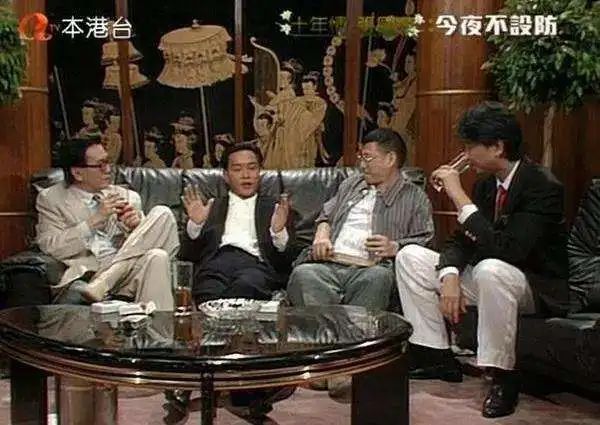

In 1990, the broadcast of "No Defense Tonight" stopped. An absurd year ended in a hurry.
Looking back on this year, all the guests who came to visit were in the most complacent life stage, and I don’t know how many celebrity anecdotes were scattered. Unfortunately, the wind and rain always blow the wind away. At that time, they had no idea where their fate would be reversed.
In the same year, Maggie Cheung and Tung shing Yee broke up. Maggie Cheung felt that Tung shing Yee loved racing more than himself. In the interview, he only said: "Tung shing Yee and I are just a literary film."
After filming Across the Seas, Cherie Chung suddenly announced his retirement from the show business, and Maggie Cheung faded out of the film industry at the age of 40. She said: "I want to really live and do what I like."
In May 2014, Maggie Cheung appeared at the Shanghai Strawberry Music Festival with an explosive head and sang "Sweet Honey" as a singer. The fans were dissatisfied and the media ridiculed: "Too out of tune, too nervous, and her voice is like a broken gong." Two days later, Maggie Cheung replied: "I have a dream of singing since I was a child. I have been in a movie for 20 times and have been called a vase. Please give me 20 opportunities to sing."
In 1991, Joey Wong and Chyi Chin broke up. Joey Wong said, "I appreciate Chyi Chin’s talent, but the only regret is that his personality is too complicated."
After Joey Wong broke up, Lin Jianyue, a wealthy businessman, entered her life. At this time, Lin Jianyue has been chasing Joey Wong for three years. At first, Joey Wong also said "I hate Lin Jianyue". Soon Lin Jianyue publicly stated that he and his wife had separated, and Joey Wong fell in love again, still facing great controversy.
In the end, the contradiction intensified. Lin Jianyue bought a 20 million house for Joey Wong. The reporter interviewed Lin Mu, and Lin Mu replied: "I spent 20 million on my son to recruit a chicken." Lin Jianyue didn’t say a word for Joey Wong, and even said lightly in the interview: "If it weren’t for her beauty, I wouldn’t associate with her." In 1996, Joey Wong left Canada.
When others humiliated Joey Wong, Chyi Chin said, "Joey Wong, as a girl, is not her own fault. She is not a girl who worships money. " In 1997, Chyi Chin and Joey Wong reunited. In the new song Cliff, Chyi Chin sang: "I don’t care where love is buried, I just want to spend the rest of my life together." Three years later, they were reportedly married, but Chyi Chin was found to be an illegitimate child. His ex-girlfriend Fang Meifang took him to court and claimed 15 million alimony. Only then did everyone know that he had a 14-year-old son.
In 2001, in The Three Bald Men, James J.S.Wong once again asked Joey Wong about her feelings. She said slowly, "In my dictionary, there is never the word marriage." Soon, he announced his retirement and went to Canada again, never showing up again. In 2016, Joey Wong’s father died, and she went back to Hong Kong to attend her funeral. Some media asked her about her emotional state. She replied: "Everything is blank. My feelings were gone before my death, and they will be blank in the future."
In 1992, Brigitte Lin and Qin and Han also broke up. Brigitte Lin said: "Although I used to love Qin and Han Dynasties so much, now I have decided to leave him."
Two years after breaking up, she married Xing Liyuan, a wealthy businessman, just after she finished filming her hundredth work. She said, "In the 22 years from 1972 to 1994, I made 100 plays and played 100 roles. In fact, Brigitte Lin was the most difficult one to play in Brigitte Lin." When Qin and Han Dynasties learned the news and wanted to keep it, Brigitte Lin made up his mind and said, "I don’t love you anymore."
After marriage, Brigitte Lin refused all film contracts, became a housewife wholeheartedly, gave birth to two daughters, and looked back on her first half of life in words.
In 2003, my brother Leslie Cheung committed suicide by jumping off the 24th floor of Mandarin Oriental Hotel. Before jumping off the building, he wrote a suicide note: "Depression, thank you, my friends, and thank you, Professor Mai Liefei. It’s been a hard year, and I can’t stand it anymore. Thank you, Mr. Tang, my family and my fat sister. I have never done anything bad in my life. Why? "
Tang Hede managed the funeral with great pain. Looking at Leslie Cheung’s portrait, Tang Hede kept crying and calling "A Zi, A Zi". He was so sad that he couldn’t stand. His left hand made a gesture of "OK"-this is the gesture Leslie Cheung made when he starred in "for your heart only", which means "I love you".
At the funeral, James J.S.Wong whimpered several times during his eulogy: "Leslie Cheung is the glory of the creator, an elaborate masterpiece of heaven. Why is such a special and expensive person suddenly taken back by God? Whether God wants to pass through him and ask us to learn and cherish from now on. " Aside, Anita Mui cried, Joey Wong didn’t come.

Four days after Leslie Cheung committed suicide, at the 22nd Hong Kong Academy Awards ceremony, Ceng Zhiwei’s opening words were: "The United States-Iraq War, SARS, and the death of his brother, one after another made people feel that the world was so gray."
On that day, the "Four Heavenly Kings", who had not been on the same stage for a long time, got together again and sang a chorus of Leslie Cheung’s Love of the Year.
Soon, James J.S.Wong also died because of the deterioration of lung cancer. James J.S.Wong once said that he hoped to retire in 2005, but unfortunately he didn’t wait until then.
Hearing that James J.S.Wong had gone, Ni Kuang shouted, "How outrageous." In the early years, James J.S.Wong and Ni Kuang looked for an iron version of God’s fortune-telling. The iron version of God only counted Ni Kuang until he was 60, but said that James J.S.Wong could live to be 70. Ni Kuang shed tears: "I am over 70 years old. How can I expect James J.S.Wong to leave so young?"
At James J.S.Wong’s memorial service, 16,000 people were present to pay their last respects to him. Before his death, James J.S.Wong chose Chu Liuxiang as his funeral funeral funeral. At the funeral, "Chu Liuxiang" circulated over the stadium: "Qian Shan, I am alone, and I don’t have to send it." Ni Kuang felt dejected, and Cai Lan left four words: "Laugh and go west".

James J.S.Wong and Cai Lan just met. Once, James J.S.Wong said to Cai Lan, "I’m sorry for Huawa (the original match of James J.S.Wong)."
Cai Lan immediately interrupted him: "Shut up, when I first met you, you said such a thing. Presumably, you will tell others the same thing."
James J.S.Wong leaned over and hugged Cai Lan and said, "Only you can tell me the truth. There are not many people who can tell the truth. "
In 2018, Cai Lan held a calligraphy exhibition in Hongkong, including James J.S.Wong’s words "Laugh at the Sea" and "Under the Lion Mountain". Cai Lan said: "It is enough to exhibit two or three pairs of James J.S.Wong’s words. It will be very hard to be too deliberate."
Ni Kuang and his wife were also present. The reporter asked: "Cai Lan mourned Uncle Zhan with calligraphy. How do you mourn?" Ni Kuang said: "I dreamed, but I didn’t see him in my dream. Several old friends didn’t dream when they left. They clearly agreed to contact each other when they left, but I haven’t seen him for so many years, but he is really a genius."
The superstars have fallen one after another, and the entertainment circle in Hong Kong has fallen into mourning. Looking back now, "Unprotected Tonight" may be the best period of their lives and the best appearance of Hong Kong.
Many years later, some netizens were curious and asked Cai Lan in Weibo: "Did you get Leslie Cheung drunk to do the show that day?" Cai Lan looked innocent: "No, he drank himself."
"Now looking back at" Unprotected Tonight ",Leslie Cheung’s free and easy, if not unprecedented, in the program, is also a peerless one."
Some references:
1. Cai Lanyi Jin Yong: Compared with him, I am just a punk, Guangzhou Daily.
2, Cai Lan interview, Lu Yu has an appointment.
3. Unrestrained Wind, Leslie Cheung, a CCTV documentary.
4. "Why don’t we start from the beginning: a biography of Leslie Cheung", Grover Guan.
5. I love Leslie, James J.S.Wong.
6, "No Defense Tonight", variety show
7. Tell Your Story, an exclusive interview with Maggie Cheung.
8. Interview with Joey Wong, true feelings index.
9. Documentary Memory 2015, Qin and Han Dynasties in Brigitte Lin.
10. James J.S.Wong by Wang Yu.
Original title: "Ni Kuang left, and the" slightly drunk "past ended."
Read the original text



